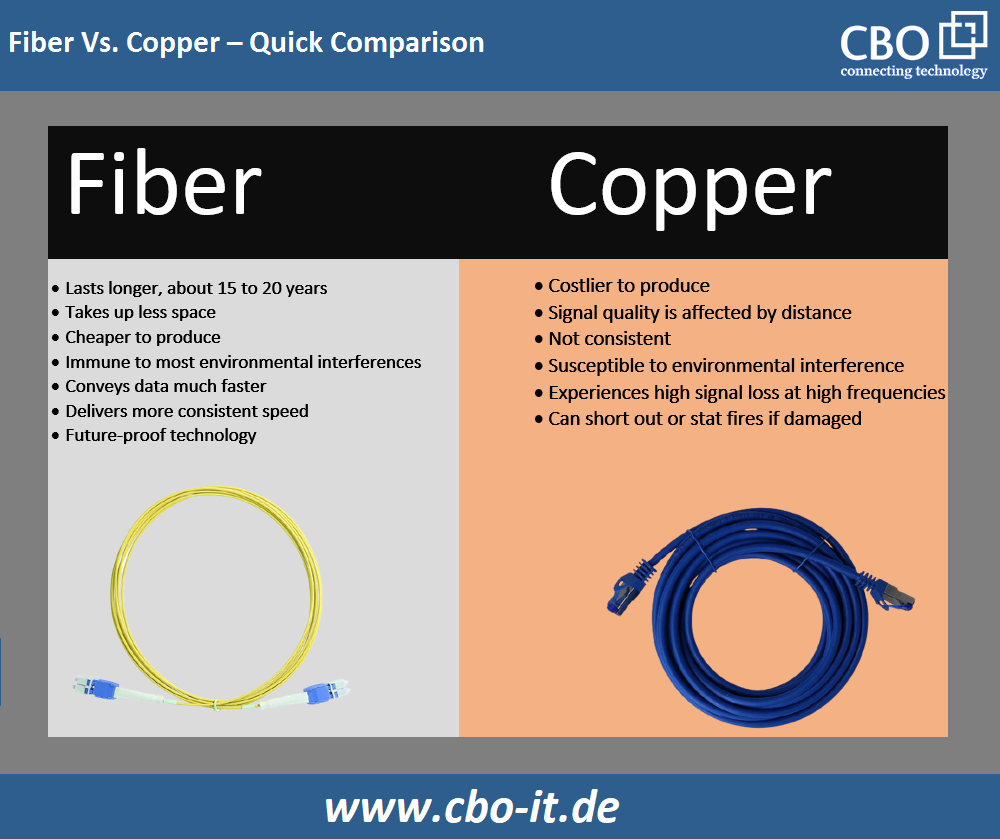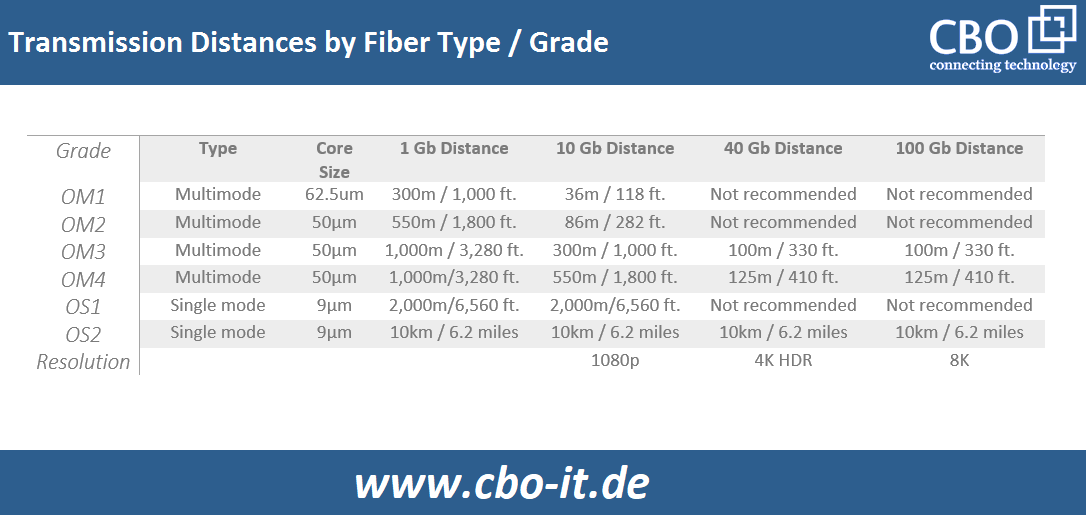For many years copper was the standard for transferring communications signals. In recent years copper wire has been replaced with a new system called fiber optics cables. You've probably heard of this technology and how it is used by many different industries, including communications, the military, aerospace, and medical robotics, to name a few. These cables allow for higher speeds of signal transfer, provide greater resistance to electromagnetic interference from radios, engines and other nearby cables, and are known for being much easier to maintain than copper wires.
Unlike copper wires, which use electronic pulses to transmit information, fiber optics cables transfer information using light pulses. Electronic codes are sent from copper wires to a transmitter, and the transmitter then translates the electronic codes into equivalent light pulses. These pulses are then sent down fiber-optic lines to the appropriate medium.

The Three Types of Cables
There are three basic fiber optics cables available; single-mode, multimode, and plastic optical fiber. Essentially, these cables serve as a light guide, sending light pulses or laser signals from one end of the cable to the other. Without getting too complicated, when the light source is pulsed on and off, it gets converted at the other end of the cable into a series of ones and zeros. These digits create a code that resembles the original signal. Sometimes repeaters, or light strengtheners, are used to ensure the signal is sent without interruption or corruption.
When it comes to fiber optics cables, single-mode fiber gives you the fastest transmission rate of the three most popular cable types. Because it has a small core and comes from a single light source, the signal is less likely to be distorted or corrupted by other light sources. These cables are also called mono-mode, uni-mode, and single-mode optical wavelength.
In multimode cables, several light waves are sent through a single core. These cables are best for medium length transmissions and tend to lose signal strength for longer cable runs. The plastic optical fiber mentioned above is a less expensive option for transmitting several light waves, and it is best used for short cable runs.

A Brief History of Fiber Optics
Fiber optics was introduced in the '70s as a replacement for copper cables. This technology was first applied to the telecommunications industry, and it is the basis for long-distance service from cities across the country. Cable television companies are also using fiber optics cables in increasing numbers today. These cables provide faster service and often reduce the need to send out technicians for repairs and service restoration. Larger organizations like colleges, hospitals, and industrial plants have integrated their information systems to create a central office network with these cables. This has increased communication, productivity, and the sharing of information.
Conclusion
Optical fiber cables offer various advantages over copper cables, and these cables offer much more bandwidth than copper cables. Unlike copper cables, we can use optical fiber cables for long-haul networking as well. Fiber is the preferred networking medium as it offers great flexibility.
 English
English
 Deutsch
Deutsch
 Espaniol
Espaniol










